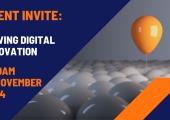Latest official radio listening figures released
Radio expert Andy Haylett looks at the RAJAR release for Q4 2011, following a record breaking period in Q3.
![]()
RAJAR’s Quarter 4 2011 data was released earlier today and we see the usual balance of winners and losers. BBC 6 Music have increased their audience to 1.4m listeners and added over 3 million listening hours to just under 12.5m, a new high for them; BBC Radio 1 have retained their near 12 million reach of Quarter 3, but dropped 10.5m hours. In the commercial sector, most national stations and groups have either matched or seen marginal declines on the previous quarter. This kind of pattern was inevitable, after all the previous quarter was a record breaking period.
In the breakfast show market things look a bit more positive. Chris Moyles on Radio 1 has increased his weekly audience, as have the breakfast shows on BBC Radio 3, 4, Classic FM, Capital London (still comfortably winning the London commercial breakfast show battle), Kiss 100 and LBC 97.3. Despite dropping relatively few weekly listeners (8,000) since last quarter, the BBC Radio 2 breakfast show with Chris Evans continues to be the most listened to breakfast show in the country with 8.9m listeners in an average week.
In the London commercial market, Capital London has come out top for both reach and hours, therefore taking the market share crown too. Their reach of 2.3m (20%) and listening hours of 12.8m (5.9%) tops that of Magic 105.4 who come second on both measures. It’s still close in London as reported previously, however Capital’s stablemate, Heart, while coming third for weekly reach (1.9m – 17%) has dropped to 5th in the listening hours table behind the steadily improving Kiss and LBC 97.3.
Digital listening continues its steady increase, now accounting for a little over 29% of total hours while 44.4% of us tune in to the radio via any digital platform; these are both increases on Quarter 3’s showing of 28.2% and 43.9% respectively. In terms of the digital listening, the driver behind this growth continues to be DAB. The proportion of people listening on the platform increased from 26.8% to 28.2% quarter on quarter while the other digital platforms show a more consistent level of reach. The same can be seen in the number of listening hours recorded on each platform:
|
Weekly Reach % |
Q3 2011 |
Q4 2011 |
|
Total Digital |
43.9 |
44.4 |
|
DAB |
26.8 |
28.2 |
|
DTV |
14.3 |
14.2 |
|
Online / Apps |
10.4 |
10.2 |
|
Share of Listening Hours % |
|
|
|
Total Digital |
28.2 |
29.1 |
|
DAB |
18.0 |
19.4 |
|
DTV |
4.7 |
4.5 |
|
Online / Apps |
3.7 |
3.4 |
True, growth in these areas isn’t exactly feverish, however we expect the ‘Christmas Effect’ to provide a further seasonal boost to numbers. The recent publication of the Ipsos TechTracker from Q4 2011 shows that ownership of other emerging technological gadgetry isn’t growing quite as quickly as one may expect – for example tablet ownership remains a niche area with just 5% of the adult population owning one. Given the wide range of DAB radio sets available and the range of prices, maybe DAB will continue to be an affordable Christmas present compared to the more expensive iPad or android tablet.
More insights about Media & Entertainment



